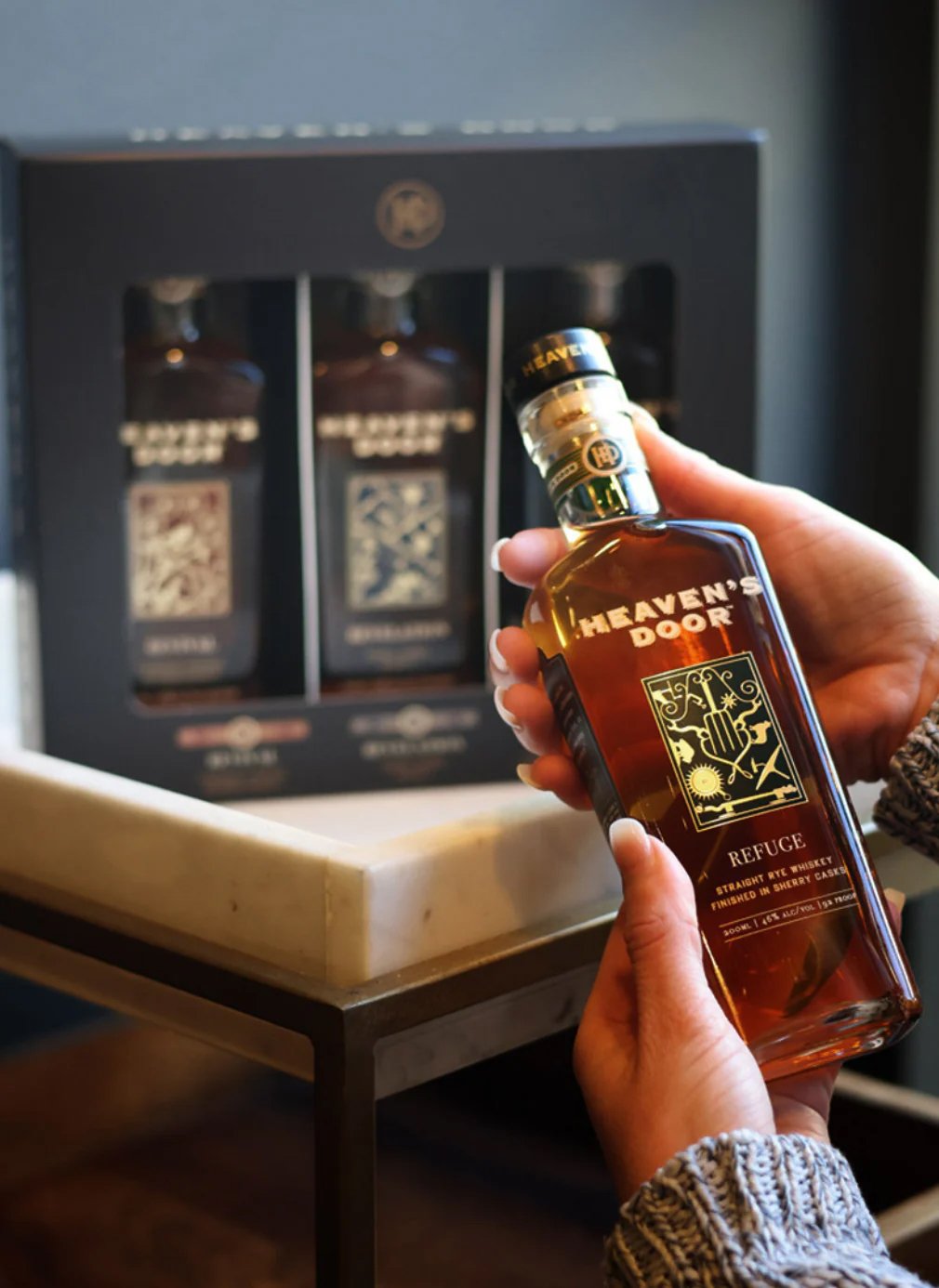ENTERTAINMENT > The Curious Case of Heaven’s Door Whiskey
In the world of branding, change is often marketed as evolution. But sometimes, it feels more like a retreat than a revolution.
Take Heaven’s Door Whiskey, for example—a brand co-founded by Bob Dylan, with a bottle design as poetic as the man himself. Its original packaging was unmistakable: intricate iron gates, embossed detail, and a tactile experience that felt like art in your hand. It wasn’t just whiskey—it was a statement.
So why change what felt like perfection?
The Allure (and Trap) of Mass Appeal
The most common reason for rebranding is growth—or rather, the fear of not growing fast enough. As niche brands like Heaven’s Door move from cult-followed to Costco-stocked, there’s a tension between craft and commerce. A new label that’s cleaner, more generic, and shelf-friendly may appeal to mass retail buyers who want uniformity, not artistry.
But what’s lost in that trade?
When Identity Becomes Optional
In a marketplace drowning in options, distinctive design is often what catches a consumer’s eye. Heaven’s Door was a standout—until it wasn’t. The rebrand, while arguably more “modern,” feels less Dylan, less story-driven, and less soulful. It leans into what everybody else is doing—a safe bet, perhaps, but at the cost of the original edge.
From Iconic to Generic: The Curious Case of Heaven’s Door Whiskey
Risk vs. Resonance
Rebranding is often driven by data—focus groups, new marketing heads, or a desire to reposition in a shifting demographic. But when brands strip away the very thing that made them magnetic, they risk becoming invisible in their quest to be universally likable.
This isn’t just about aesthetics—it’s about trust. Legacy, narrative, and emotion are hard-earned currencies. A rebrand, done poorly, can feel like a betrayal to loyalists who bought into more than just a product.
The Wabi-Sabi Lesson
Perfection isn’t always the goal. Sometimes, the beauty is in the uniqueness—the flaw, the rough edge, the unexpected detail that makes something yours. Heaven’s Door had that. The rebrand may attract new drinkers, but it’s a reminder: in chasing new eyes, don’t lose sight of the ones who already saw you.
Bob Dylan: The Beautiful Imperfection of a Voice That Wouldn’t Stay Still
Bob Dylan never wanted to be perfect—he just wanted to be honest. A poet born in the dust of Hibbing, Minnesota, with a voice like rusted wire and a mind like a broken compass, he wandered into the world carrying little more than a harmonica and the weight of every story he’d never lived but somehow understood.
He cracked open America’s myths with a crooked grin and songs that didn’t rhyme the way they were supposed to. And in those jagged lines—those off-kilter truths—he found something sacred: the raw beauty of being unfinished.
Dylan is Wabi-Sabi. Not polished, not pristine. Always changing, always challenging. He shapeshifted from folk prophet to electric outlaw, gospel preacher to elder statesman, leaving fans and critics to catch up or fall behind. He never stood still long enough to be captured—only felt, like smoke in a church.
His music doesn’t beg to be liked. It dares you to listen. And if you do, you’ll hear the cracks—the heartbreak, the rage, the joy, the silence between the verses. That’s where the truth lives.
He is the original mended bowl. The jagged edge turned gold.
Still singing. Still wandering. Still not finished.
🎙 Iconic Albums
The Freewheelin’ Bob Dylan (1963)
Breakout protest album with a raw, poetic voice.
🔹 Blowin’ in the Wind
🔹 A Hard Rain’s a-Gonna FallBringing It All Back Home (1965)
The electric turn — a dividing line in folk and rock history.
🔹 Subterranean Homesick Blues
🔹 It’s Alright, Ma (I’m Only Bleeding)Highway 61 Revisited (1965)
Bold, electric, and rebellious — Dylan at his fiery peak.
🔹 Like a Rolling Stone
🔹 Desolation RowBlonde on Blonde (1966)
The first great double album in rock — surreal, swaggering, and sophisticated.
🔹 Just Like a Woman
🔹 Visions of JohannaBlood on the Tracks (1975)
The divorce album. Heartache and storytelling at its finest.
🔹 Tangled Up in Blue
🔹 Simple Twist of FateJohn Wesley Harding (1967)
A stripped-down, country-blues rebuke to psychedelia.
🔹 All Along the Watchtower
🔹 I Dreamed I Saw St. AugustineTime Out of Mind (1997)
A late-career resurrection — dark, bluesy, and full of longing.
🔹 Not Dark Yet
🔹 Love Sick
🎵 Essential Songs (Across All Eras)
The Times They Are A-Changin’ – The protest anthem of a generation.
Mr. Tambourine Man – Psychedelic and poetic, an invitation to dream.
Don’t Think Twice, It’s All Right – Wry, bitter, and beautiful.
Forever Young – A tender blessing, timeless in sentiment.
Knockin’ on Heaven’s Door – Simple, haunting, eternal.
Gotta Serve Somebody – His gospel-era declaration.
Make You Feel My Love – Covered endlessly, still uniquely his.
Related Articles
When One Person Truly Sees You
The Art of Becoming: Sculpting Your Identity
How to Destroy Negative Thoughts
The Ageless Rocker: Keeping the Fires Burning







